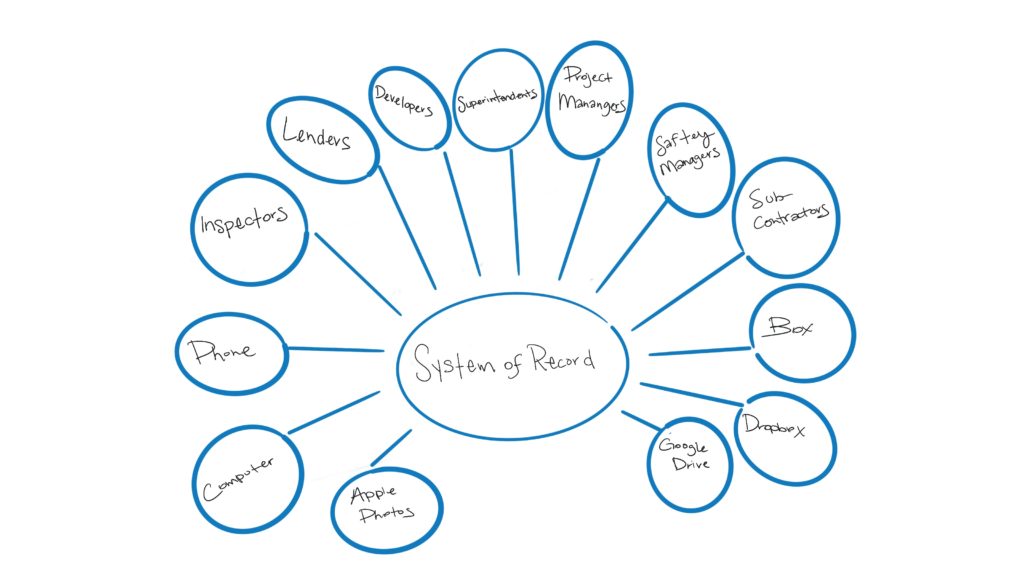Institutional construction job sites are incredibly complex projects and have myriad different stakeholders including, but not limited to, architects, designers, general contractors, subcontractors, developers, lenders, inspectors, etc. Typically, each stakeholder’s work is dependent on another’s work so documenting when work is performed, by whom, and that it meets quality expectations is critical to staying on schedule. As a result, photo documentation has become the standard method of capturing this information, particularly as cameras are becoming smaller, faster, cheaper and better. The existing photo-taking workflow typically requires hours of manually taking pictures, uploading, foldering and saving them in offline, uncollaborative environments. More sophisticated stakeholders upload, folder and save to the cloud but across myriad different products including desktops, laptops, smartphones, Google Drive, Apple Photos, Box, Dropbox, etc. This makes it difficult to conduct a quick historical search and challenging to communicate with other critical stakeholders. In addition, no readily available products automatically extract data from existing static images to provide actionable insights.
As a result, the construction industry requires a cloud-native platform that automatically stitches together, uploads, folders and saves photos in real-time to allow for searching, note tagging and collaboration between all stakeholders. This product provides many benefits. First, it saves time by automating rudimentary tasks so stakeholders can focus on more meaningful work and reduces the number of onsite visits required by stakeholders. Second, real-time updates and structured data increases accountability, collaboration, and transparency, resulting in faster turnaround times. Third, and arguably, more importantly, it creates an immutable system of record-tying the quality of work done by specific technicians to the performance of an asset over its lifetime. The ability to easily search historical records reduces risk exposure and protects stakeholders (developers, general contractors, and insurance companies) from current or future disputes, lawsuits or change orders.
Startups, such as OpenSpace have noticed this opportunity and are already building valuable technology to solve this pain point. OpenSpace is in a first-mover position which is advantageous because of the inherent data network effects embedded in this product. For example, each additional stakeholder contributes more photos and data to the repository which makes the AI/ML models better resulting in improved outcomes (ie progress management and risk management) resulting in more users, more data, better software, and even better outcomes. As a result, this system of record creates a continuously growing standardized data repository. And once a construction stakeholder starts using OpenSpace, the switching costs are high because it’s difficult to transfer photos from one platform to another.

Although developers and contractors realize the most near-term benefits from using OpenSpace, insurance companies and lenders can also benefit in the future. For instance, insurance companies have spent a lot of time and lost a lot of money investigating malpractice litigation or contract disputes. By using an easily searchable photo document repository, insurance companies can help thwart claims and reduce losses. Lenders typically distribute construction loans in disbursements because construction loans are considered much riskier than mortgage loans. As a result, a lender requires an inspector to inspect construction job sites in-person to determine project progress. If the job site meets specific progress thresholds, the lender will distribute funds. The current inspection paradigm requires a lot of coordination, communication, and onsite visits. Although the inspection process will most likely never be fully automated, OpenSpace’s photo repository could perhaps expedite the existing construction loan draw management workflow by enhancing human inspector’s jobs whereby giving them more detailed information and reducing the number of required site visits.
If you’re a data imagery startup helping increase productivity and decrease risk exposure, please reach out!

